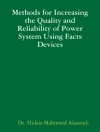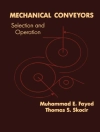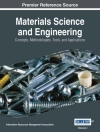- Focuses on advances in preservation technologies such as advanced modelling of cooling patterns, dynamic controlled atmosphere and improving use of 1-MCP as an ethylene inhibitor
- Reviews strengths and weaknesses of different disinfection techniques, such as the use of sanitisers, hot water or air, irradiation, plasma, ozone and natural antimicrobials
- Covers developments in smart supply chain and distribution monitoring and management
สารบัญ
Part 1 Preservation techniques
1.Advances in cooling technologies to preserve horticultural produce: J. R. Olatunji and A. R. East, Massey University, New Zealand;
2.Advances in controlled atmosphere storage of horticultural produce: John De Long, Agriculture and Agri-Food Canada, Canada; and Robert Prange, Dalhousie University, Canada;
3.Advances in modified atmosphere and active packaging of horticultural produce: Jeffrey S. Brandenburg, The JSB Group LLC, USA;
4.Advances in the use of barrier coatings and additives in the preservation of fresh horticultural produce: Elizabeth A. Baldwin, formerly USDA-ARS, USA; and Jeffrey K. Brecht, University of Florida, USA;
Part 2 Safety management and disinfection techniques
5.Post-harvest risk management of biological hazards encountered in horticultural produce: Keith Warriner and Mahdiyeh Hasani, University of Guelph, Canada;
6.Advances in understanding pathogens contaminating horticultural produce: P. Truchado, A. Allende and M. I. Gil, CEBAS-CSIC, Spain;
7.Advances in postharvest sanitizing regimes for horticultural produce: Joshua B. Gurtler, Xuetong Fan, Tony Jin and Brendan A. Niemira, USDA-ARS, USA;
8.Advances in using heat for disinfection/disinfestation of horticultural produce: Elazar Fallik and Susan Lurie, Agricultural Research Organization – Volcani Center (ARO), Israel; and Lisa Jamieson and Allan Woolf, The New Zealand Institute for Plant & Food Research Limited, New Zealand;
9.Advances in the use of irradiation for the market access of fresh horticultural produce: John Golding and Sukhvinder Pal Singh, New South Wales Department of Primary Industries and University of Newcastle, Australia;
10.Advances in the potential use of non-thermal plasma in postharvest treatment of fresh horticultural produce: Sukhvinder Pal Singh and John Golding, New South Wales Department of Primary Industries and University of Newcastle, Australia;
11.Advances in the use of ozone in the disinfection of horticultural produce: Marcin Glowacz, Natural Resources Institute (NRI) – University of Greenwich, UK;
12.Advances in the use of biological control agents in the disinfection of horticultural produce: Samir Droby, Agricultural Research Organization – Volcani Center (ARO), Israel; Michael Wisniewski, USDA-ARS, USA; and Davide Spadaro, University of Torino, Italy;
Part 3 Monitoring and management
13.Monitoring postharvest attributes: instrumental techniques for measuring harvest maturity/fruit quality: Kerry B. Walsh and Nicholas T. Anderson, Central Queensland University, Australia;
14.Postharvest handling of organically produced specialty crops: Penelope Perkins-Veazie, Chris Gunter and Marlee Trandel, North Carolina State University, USA;
15.Smart distribution to maintain shelf life of horticultural produce: J. K. Brecht, University of Florida, USA; I. Uysal and M. C. N. Nunes, University of South Florida, USA; J. P. Emond, The Illuminate Group, USA; S. Mercier, Décathlon Canada, Canada; and U. Mc Carthy, Waterford Institute of Technology, Ireland;
เกี่ยวกับผู้แต่ง
Dr. Perkins-Veazie is a postharvest physiologist in the Department of Horticultural Science, North Carolina State University. Her research is on how postharvest storage of fruits and vegetables alters the nutritional and phytonutrient profile. Dr. Perkins-Veazie previously worked for the USDA Agricultural Research Service for over 20 years, is a Fellow of the American Society for Horticultural Science, and serves on several editorial boards for peer reviewed journals.












